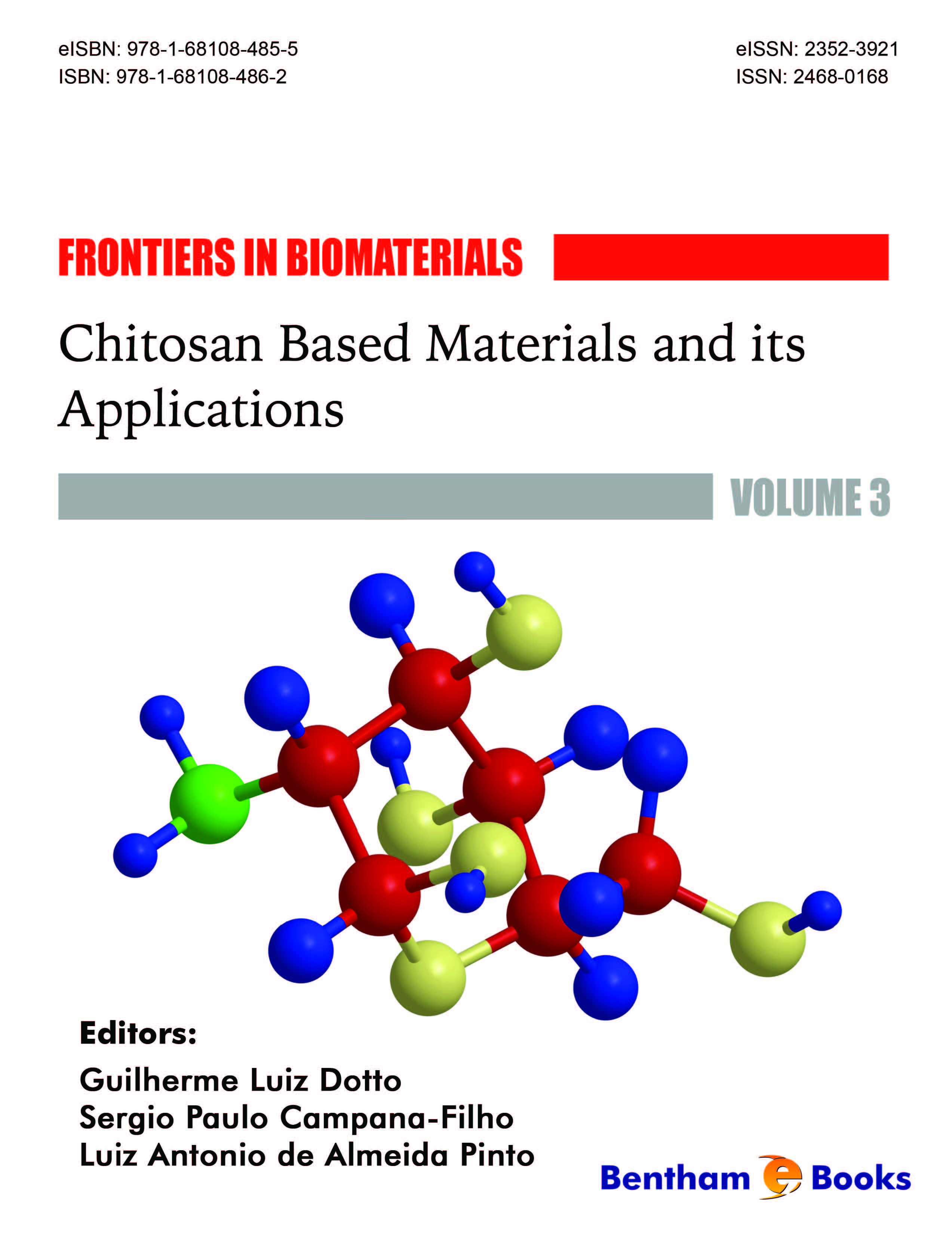Foreword
Petroleum is an important source of energy and materials in our world and many products we use every day are derived from it. However, environmental and economic considerations lead to consider new sources to allow less dependency on fossil fuels. Natural polymers may be one of these alternatives, and among them, polysaccharides form a large class containing a number of industrially-important ones. Chitin, despite constituting the second most abundant natural polymer has not achieved the same commercial importance as for, cellulose, starch or alginate. Academic as well as industrial scientists have developed strong energy to find new and potential applications for this material and most preferentially for chitosan, being its major derivative. The latter presents very specific properties particularly due to its capacity to be polycationic in acidic medium but also a great interest considering the multiple forms in which it can be processed. As a consequence, possible applications cover a wide domain, and this book in a comprehensive manner summarizes many of the most recent technical and research accomplishments in chitosan covering its acquisition processes, characterization, chemical modifications and specific applications such as dyes and metals removal, drug delivery, coatings (especially for food applications), and permeation processes.
The contents of this book highlight the most important challenges and information needed to understand chitosan science. Chitosan is derived from chitin and many processes were designed for deacetylation reaction leading to acquire this derivative. For a few years, microwave-assisted as well as ultrasound processes have been developed and found to be of great interest as it is developed in this book. The characterization of obtained chitosans is of major importance and still remains a challenge for users. The used techniques are discussed in this book and this will strongly help the chitosan users. But chitosan as well as other polysaccharides, do not exhibit all the required properties necessary for specific applications. As a consequence, it is necessary to carry out modifications and the presence of amino groups in chitosan structure allows selective reactions which are described in this book. It is possible to prepare cationic, anionic, amphiphilic or crosslinked materials demonstrating the versatility of this polysaccharide. All of these actions allow the chitosan to be used in applications, covering wide domains as biomedical or pharmaceutics, cosmetics, food, agriculture, water treatment and permeation.
This book is a very useful addition to literature on chitin and chitosan, particularly for those working on the development of new products for specific applications. The authors have to be thanked for their successful contribution to chitosan development demonstrating its strong interest and unlimited potential of applications and it will stimulate researchers in order to continue their efforts so that chitosan finds the place within the polysaccharide world.
Jacques Desbrières
Professeur Directeur Adjoint UFR Sciences et Techniques de Pau,
Hélioparc Pau Pyrénées,
2 Avenue P. Angot,
64053 PAU cedex 9
Tél: 05 59 40 76 02
E-mail: jacques.desbrieres@univ-pau.fr

